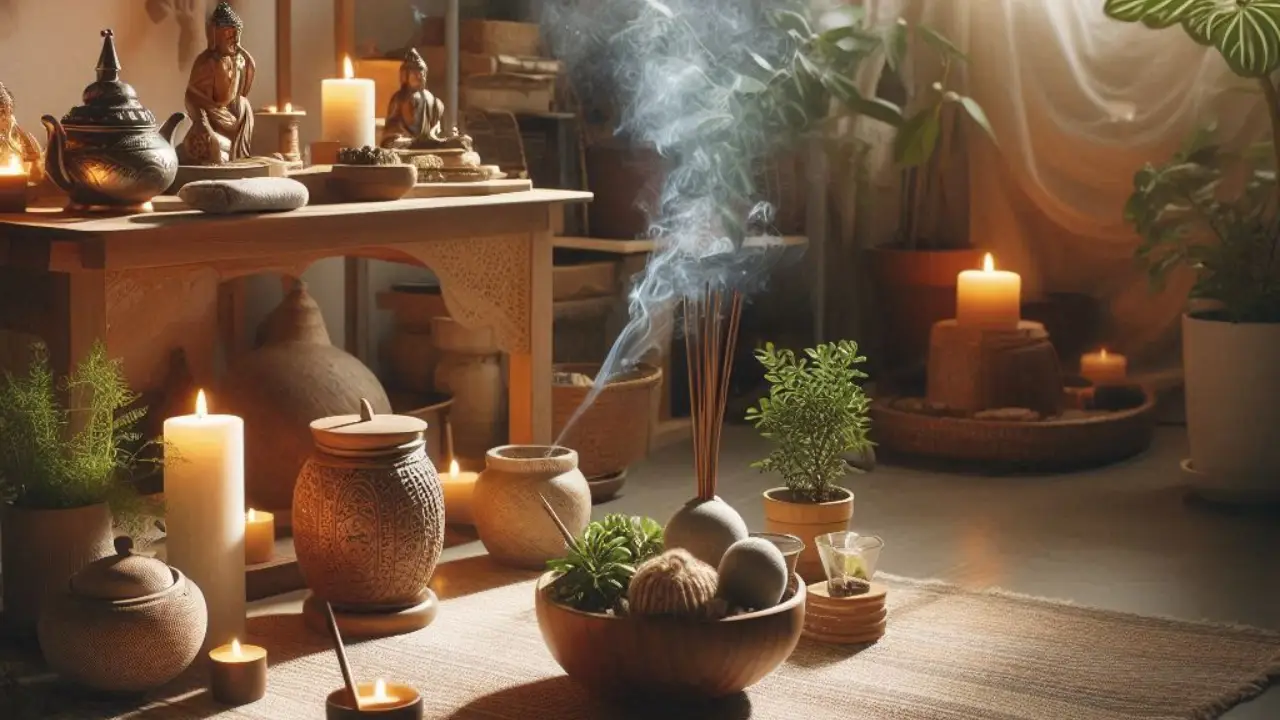Setting up a sacred space for pooja prayers is a deeply personal and spiritual process. This guide aims to help you create a space that is both meaningful and conducive to your spiritual practice.
Understanding the Importance of a Sacred Space
A sacred space for pooja is not just a physical area but a spiritual sanctuary where you can connect with the divine. It is a place of peace, reflection, and devotion. Creating this space involves careful thought and preparation to ensure it aligns with your spiritual needs and the principles of Hindu worship.
Choosing the Right Location
The first step in creating a sacred space for pooja prayers is selecting the right location. Ideally, this should be a quiet, clean, and clutter-free area in your home. Traditionally, the northeast corner (Ishanya) of the house is considered auspicious for setting up a pooja space. However, you can choose any spot that feels right to you.
Tips for Selecting the Location:
Quiet and Peaceful: Choose a location that is away from the hustle and bustle of daily activities.
Clean and Clutter-Free: Ensure the space is clean and free of unnecessary items. This helps in maintaining the purity of the space.
Good Ventilation and Natural Light: A well-ventilated area with ample natural light creates a positive and serene environment.
Gathering Essential Items for Pooja
Once you have selected the location, the next step is to gather the essential items required for pooja. These items may vary based on personal preferences and regional practices, but here are some common elements:
Idols or Pictures of Deities: Choose idols or images of the deities you worship. Ensure they are clean and in good condition.
Pooja Thali: A plate containing essential items like kumkum (vermilion), turmeric, rice grains, incense sticks, a diya (oil lamp), and flowers.
Bell: A small bell is often used to start the pooja and invite the divine presence.
Conch Shell: Blowing a conch shell is considered auspicious and is believed to purify the environment.
Water and Panchamrit: Water and a mixture of milk, yogurt, honey, sugar, and ghee for offerings.
Flowers and Leaves: Fresh flowers and specific leaves like tulsi (holy basil) are commonly used in pooja.
Setting Up the Home Temple/ Altar
The altar is the focal point of your sacred space for pooja prayers. It is where you place the idols or pictures of deities and arrange the pooja items. Here’s how you can set it up:
Clean the Area: Start by cleaning the altar area thoroughly.
Place a Cloth: Lay a clean, preferably white or red cloth on the altar. This adds to the purity and aesthetics of the space.
Arrange the Deities: Place the idols or pictures of deities in the center. Ensure they are at eye level when you sit down to pray.
Organize Pooja Items: Arrange the pooja thali, bell, conch shell, and other items neatly around the deities.
Decorating Your Sacred Space
Decorating your sacred space adds to its sanctity and beauty. Use flowers, rangoli (decorative patterns made with colored powders), and diyas to adorn the area. You can also add personal touches like family heirlooms or items with special significance.
Tips for Decoration:
Fresh Flowers: Use fresh flowers daily. They not only look beautiful but also bring a natural fragrance to the space.
Rangoli: Create a small rangoli design at the entrance of your pooja space. It is believed to welcome positive energies.
Diyas and Candles: Light diyas or candles during the pooja. They symbolize the removal of darkness and ignorance.
Incense Sticks: Burn incense sticks to create a fragrant and serene environment.
Performing the Pooja
With your sacred space set up, you are ready to perform the pooja. The process may vary based on personal and regional practices, but here is a general outline:
Begin with a Cleanse: Wash your hands and feet before entering the pooja space.
Ring the Bell: Start the pooja by ringing the bell to invite the divine presence.
Light the Diya: Light the diya and place it on the altar.
Offerings: Offer flowers, water, and panchamrit to the deities. You can also offer fruits and sweets.
Chanting and Prayers: Recite prayers, mantras, or bhajans (devotional songs) to invoke the deities.
Meditation and Reflection: Spend a few moments in meditation or silent reflection to connect with the divine.
Aarti: Perform the aarti by moving a lit camphor or ghee lamp in a circular motion in front of the deities.
Prasad: Conclude the pooja by distributing prasad (blessed food) to family members and guests.
Maintaining Your Sacred Space
Maintaining the sanctity and cleanliness of your sacred space is crucial. Here are some tips for ongoing maintenance:
Regular Cleaning: Clean the space daily, removing old flowers and wiping down the surfaces.
Refresh Offerings: Change the water, flowers, and other offerings regularly to keep the space fresh and inviting.
Periodic Deep Cleaning: Perform a thorough cleaning of the space and the pooja items periodically.
Personal Stories and Experiences
Creating a sacred space for pooja can be a transformative experience. I recall a story from my childhood when my grandmother would wake up at dawn to perform her daily pooja. The entire house would be filled with the fragrance of incense and the sound of her chanting. It was a serene and spiritual start to the day, and those memories have inspired me to create my own sacred space at home.
Creating a sacred space for pooja is a deeply personal and fulfilling journey. It allows you to connect with your spirituality and bring a sense of peace and devotion into your home. Have you set up a pooja space in your home? Share your experiences and tips in the comments below!

